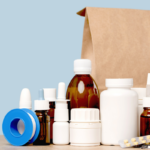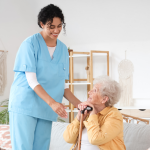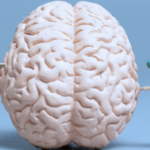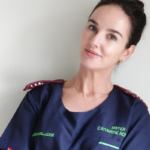What is SIDS?
SIDS is the sudden, unexplained death of a baby under one year of age. While the exact cause of SIDS is unknown, it is believed to be related to an underlying health condition or breathing problem.
There are several factors that can increase the risk of SIDS, including:
- Sleeping on the stomach or side
- Overheating
- Exposure to smoke
- Premature birth or low birth weight
- Family history of SIDS
- Lack of prenatal care
- How can CPR help in an emergency?
Babies are at a higher risk of SIDS if they have their heads covered, and unnecessary items such as soft toys, cot bumpers and pillows can increase the risk of head covering or lead to an accident.
- An empty cot is a safe cot.
- Baby should always be placed to sleep on their back.
- Baby’s sleep space should be breathable and not fully enclosed as this can lead to suffocation – take cot bumpers, pillows and decorative items out when placing baby to sleep.
In the event of an emergency, CPR can be a life-saving technique. CPR, or cardiopulmonary resuscitation, involves performing chest compressions and rescue breathing to help maintain blood flow and oxygen to the brain and other vital organs. For a baby, the technique is slightly different than for adults, so it’s important to learn proper infant CPR techniques.
Learning CPR can give you the knowledge and confidence to respond in an emergency situation. By performing CPR, you can help stabilize your baby until medical professionals arrive.
How can you reduce the risk of SIDS?
While there is no guaranteed way to prevent SIDS, there are several steps you can take to reduce the risk. Some of these steps include:
- Always placing your baby on their back to sleep
- Using a firm, flat sleep surface without any soft objects or loose bedding
- Keeping your baby’s sleeping area in the same room as you for the first six months of life
- Avoiding exposure to smoke
- Breastfeeding your baby, if possible
- Using a pacifier during sleep
- Providing tummy time during awake hours
- In addition to these steps, learning CPR can be a valuable tool in reducing the risk of SIDS. By being prepared for an emergency, you can respond quickly and confidently in a crisis.
In conclusion, SIDS is a devastating tragedy that no parent wants to imagine. But by taking steps to reduce the risk of SIDS and learning CPR, you can be better prepared for an emergency situation. Don’t wait until it’s too late – learn CPR today and take steps to keep your baby safe.

Pre-School to High School CPR and First Aid Courses
Pre-School to High School CPR and First Aid Courses Ensure the safety of young lives with our comprehensive CPR and First Aid Course. This vital training is tailored to the unique needs of Preschool, Primary School, and High School staff, empowering them to respond effectively to accidents and medical emergencies.

Safe Administration and Storage Of Medications In Schools
Safe Administration and Storage Of Medications In Schools Course This course is tailor-made for the school setting, educators and affiliated staff. You will also learn how to handle certain emergency situations as well as life saving CPR skills. This course is a must for all schools. Enrol now to gain

Level 1 First Aid Course
Level 1 First Aid Course Any workplace with more than ten employees must have a trained first aider and first aid supplies on the premises, according to the Occupational Health and Safety Act. We offer you a First Aid accredited Course. Course Cost accredited by HWSETA and aligned to Unit

Caregiver Course
Caregiver Course Are you passionate about helping others? Our Caregiver Course equips you with the skills and knowledge needed to provide compassionate care to a diverse range of individuals, including babies, the elderly, patients with Alzheimer’s or dementia, the terminally ill, paraplegic individuals, stroke survivors, and so much more. Course

The Importance of learning First Aid if your child has a brain injury
As parents, our greatest wish is to provide our children with a safe and nurturing environment, ensuring they have the opportunities and care we may not have experienced ourselves. We navigate through their milestones, holding their hands as they learn to walk, climb, and explore the world around them. However,

The Importance of Learning CPR and First Aid for Teenagers
As parents, learning CPR and first aid is not just about personal readiness; it’s a powerful tool in ensuring the safety and well-being of our adolescent children. Here’s why it’s crucial for parents to acquire these life-saving skills for their teenage children. Sister Catherine writes about the importance of learning

From witnessing a lot of trauma in my work to empowering parents
I want to take you on a journey that led me to become a full-time CPR and first aid instructor and proud business owner of Survival CPR. This story is about passion, empowerment, and making a real difference in the lives of people like you. A Trauma-Fueled Calling: Having spent

The Role of the Microbiome in Children
As we bask in the warmth of spring and witness the beauty of nature’s renewal, let’s delve into a topic just as fascinating and vital for our little ones’ well-being – the microbiome. This month, we explore the incredible world of microorganisms that inhabit our children’s bodies and the profound

World Breastfeeding Week
World Breastfeeding Week: Celebrating the Benefits for South African Families As we embrace the month of August, we joyfully celebrate the significance of family and the well-being of our precious little ones. In this blog post, we highlight the importance of World Breastfeeding Week, a cherished event that takes place


